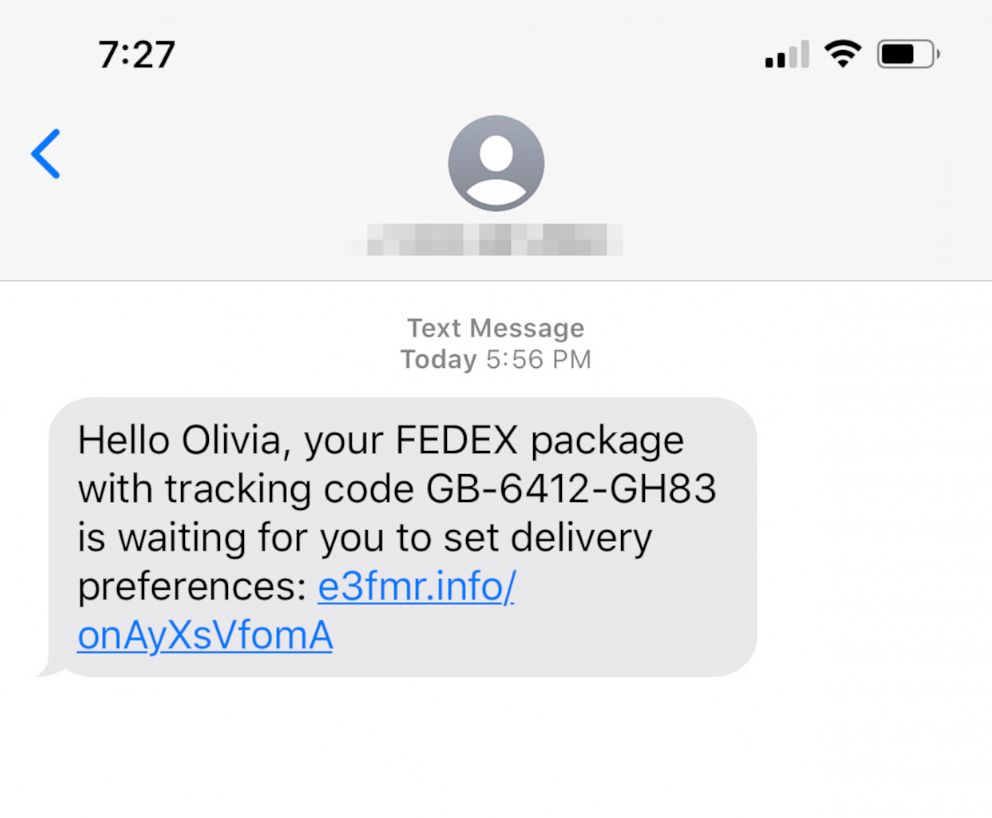It’s quite normal to receive a package delivery every day. Unfortunately, your package delivery may be abused by scammers to steal your personal information or money. That’s why the article below is here. It’s of great necessity to identify a package delivery scam and avoid it smartly.

Why a Package Delivery Scam?
Undoubtedly, scammers are everywhere.
You can hardly expect scammers to disappear because they have the highest adaptability and flexibility. They enter the areas where traffic is high. With online shopping becoming increasingly popular, package deliveries have been widely used, which just attracts scammers. Below is a common sample package delivery scam text:

What is a package delivery scam like, then?
Scammers usually send fake messages via text or emails to victims when they claim themselves to be from an official delivery service, FedEx, for example. In the message, a victim is required to click the enclosed link to supplement personal information or select delivery favors. As the link is clicked, the victim will lose his or her personal information or money.
Distinguish Between a Legit and a Scam Text or Email for a Package Delivery
If you can spot a scam, you can stop a scam.
To avoid a package delivery scam, it’s, first of all, essential to distinguish between a legit delivery message and a scam message.
Generally speaking, when the following features are covered, such a message must be a scam message.
- You are required to click on a link contained in the message or download an attachment.
- You are required to take an action right now.
- You are required to provide personal or financial information again.
- There are spelling errors in the message.
- The enclosed link address has nothing to do with the delivery service name in the expression.
How to Avoid a Package Delivery Scam?
Fraudsters are sending fake package delivery messages via text and email, hoping you’ll click the enclosed link. But don’t be tempted. Here are 3 ways to avoid a package delivery scam.
Tip#1. Track correctly.
Keep track of your online orders and their shipping status. Knowing what’s coming and when makes it easier to spot fake delivery messages.
Tip#2. Don’t respond.
Don’t respond to unsolicited texts or emails claiming to be from a delivery service that asks you to provide, update or verify personal information, and don’t click on links in those messages. Go back and double-check your original order to confirm all the necessary information is there.
Tip#3. Communicate safely.
Rely on safe ways to communicate with delivery companies. Call a confirmed customer service number or log on to a company’s official website and use the check function.

With RealCall AI, you can effortlessly avoid package delivery scam texts.
Powered by OpenAI, the leading AI research and deployment company, RealCall AI is capable of automatically dealing with all risky and unwanted texts behind the screen. Based on the AI language model, ChatGPT 4 can analyze and process language input to identify patterns, sentiments, and intent and sense the trivial malicious intent hidden in the text message ordinary people fail to notice. Plus, with the continuously updated risky number database developed by RealCall team and long-term users’ reports, RealCall AI is capable of accurately and quickly identifying scam-likely texts and dealing with them in users’ personalized ways.
Instead of blocking alone, RealCall AI is capable of letting pass all the important and necessary text messages that really belong to users’ demands like those from real hospitals, banks, etc. Between you and scammers is RealCall AI as a one-to-one mobile communication guardian.

